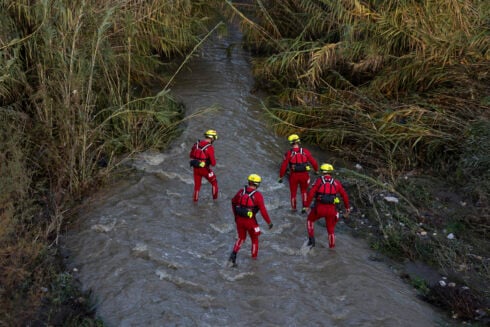SPAIN is facing its hottest day in 74 years as a crippling heatwave looks set to reach its first apex this weekend.
According to state weather agency Aemet, the mercury could reach record highs of 44C on Saturday, which is going to be the hottest day of the year so far and potentially since records began back in 1950.
Thursday has already seen a significant increase in temperatures with many areas of inland Andalucia nearing 40C today.
The heatwave has been sparked by a hot blast of air from sub-Saharan Africa.
The most at-risk regions are in the south and centre of the mainland, including Andalucia, Aragon, Castilla-La Mancha, Extremedura, Navarra and Madrid.
They all have orange-level alerts in place for extreme heat tomorrow, implying a ‘significant risk to health’.
Other regions on alert for heat include Castilla y Leon, the Balearic Islands, the Basque Country, La Rioja, the Valencian Community and Catalunya.
But it won’t just be hot during the day, with tropical nights seeing minimum temperatures of 20C or above, making sleeping difficult for many.
According to Aemet, the heatwave may last until the middle of next week.
The weather service says several of the coming days will be among the hottest 5% since 1950, especially on Friday and Saturday – which could break all time records in some areas, particularly on the Mediterranean coast.
READ MORE: Heatwave warning in Spain: Highs of 44C this week
According to Aemet, temperatures in Benidorm and across the whole Costa Blanca, meanwhile, are set to soar past 40C on Saturday.

Benidorm will see highs of 36C tomorrow, before reaching 41C on Saturday.
Aemet has published a list of precautions people should take when temperatures reach such levels.
This includes ‘staying hydrated with plenty of water’ and avoiding ‘drinks containing caffeine and alcohol’ because they can ‘dehydrate the body, taking it to the point of heat stroke.’
Meanwhile, between 12pm and 5pm, you should avoid direct sunlight, especially if you are doing physical activity. In fact people should preferably remain indoors or in the shade.
During these hours, due to the position of the sun in the sky, its rays are at their strongest – bringing a greater risk of sunburn or sun stroke.
Meanwhile, children, the elderly and people with chronic illnesses must be closely monitored as they are more vulnerable to the extreme conditions.
Click here to read more Spain News from The Olive Press.








